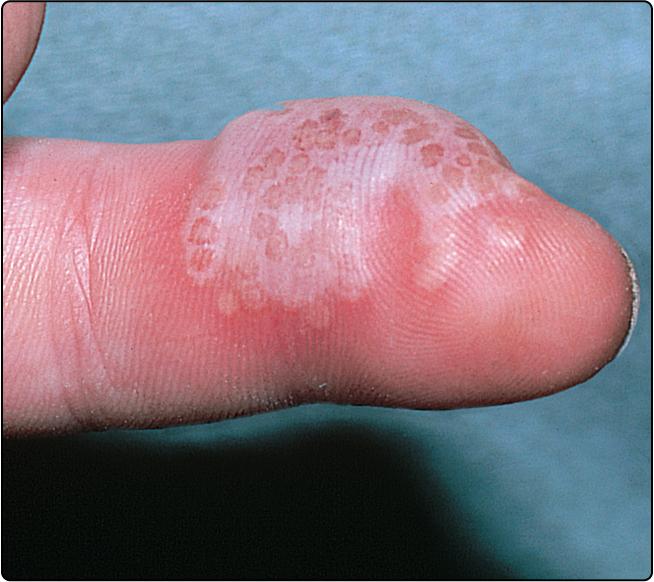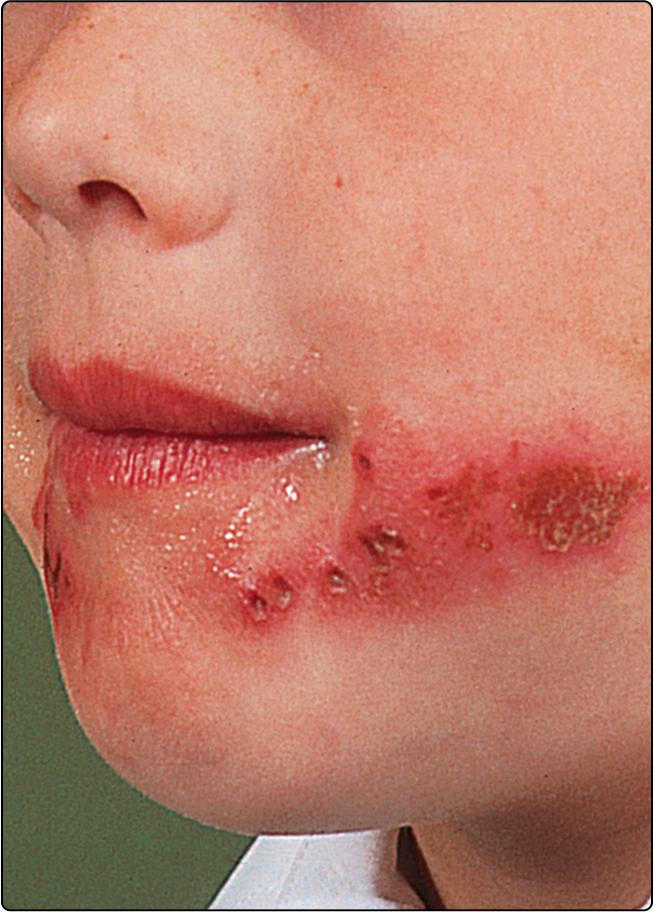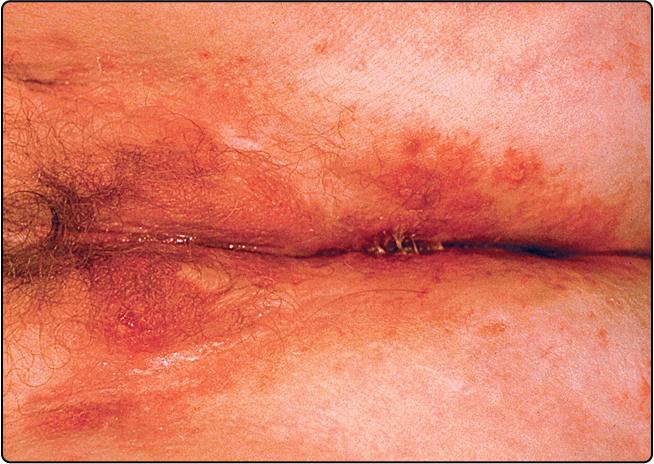Physical Address
304 North Cardinal St.
Dorchester Center, MA 02124
Herpes simplex is a very common, acute, self-limiting vesicular eruption due to infection with Herpesvirus hominis .
Herpes simplex virus is highly contagious and is spread by direct contact with infected individuals. The virus penetrates the epidermis or mucous membrane epithelium and replicates within the epithelial cells. After the primary infection, the latent non-replicating virus resides mainly within the dorsal root ganglion, from where it can reactivate, invade the skin and cause recrudescent lesions. There are two types of herpes simplex virus. Type 1 disease is usually facial or non-genital, and type 2 lesions are commonly genital, although this distinction is not absolute. The pathological changes of epidermal cell destruction by the herpes virus result in intraepidermal vesicles and multinucleate giant cells. Infected cells may show intranuclear inclusions.
Type 1 primary infection usually occurs in childhood and is often subclinical. Acute gingivostomatitis is a common presentation in those with symptoms. Vesicles on the lips and mucous membranes quickly erode and are painful. Sometimes the cornea is involved. The illness is often accompanied by fever, malaise and local lymphadenopathy, and lasts about 2 weeks.
Herpetic whitlow is another presentation ( Fig. 30.1 ). A painful vesicle or pustule is found on a finger in, e.g. a nurse or dentist attending a patient secreting the virus. Similar direct inoculation is sometimes seen in sportsmen such as wrestlers (‘herpes gladiatorum’).

Type 2 primary infection is normally seen after sexual contact in young adults, who develop acute vulvovaginitis or penile or perianal lesions. Culture-positive genital herpes simplex in a pregnant woman at the time of delivery is an indication for caesarean section, as neonatal infection can be fatal.
Recurrence is a hallmark of herpes simplex infection; it occurs at a similar site each time, usually on the lips, face ( Fig. 30.2 ) or genitals ( Fig. 30.3 ). Rarely, herpes simplex may appear in a zosteriform dermatomal distribution. The outbreak of groups of vesicles is often preceded for a few hours by tingling or burning. Crusts form within 24–48 hours, and the infection fades after a week. Attacks may be precipitated by respiratory infection (hence ‘cold’ sore), sunlight or local trauma.


Occasionally, herpes simplex can be confused with impetigo but, in recrudescent disease, the recurrent nature usually indicates the diagnosis. If necessary, the virus can be cultured or detected by an immunofluorescent test.
Become a Clinical Tree membership for Full access and enjoy Unlimited articles
If you are a member. Log in here